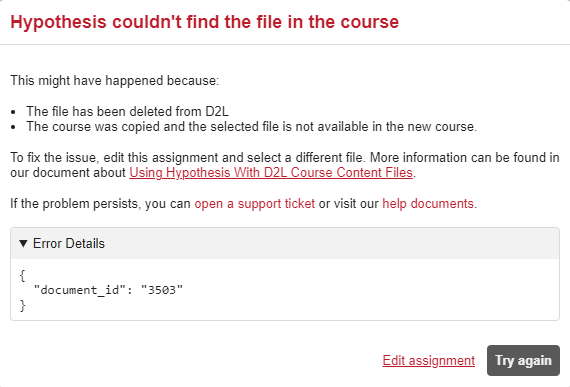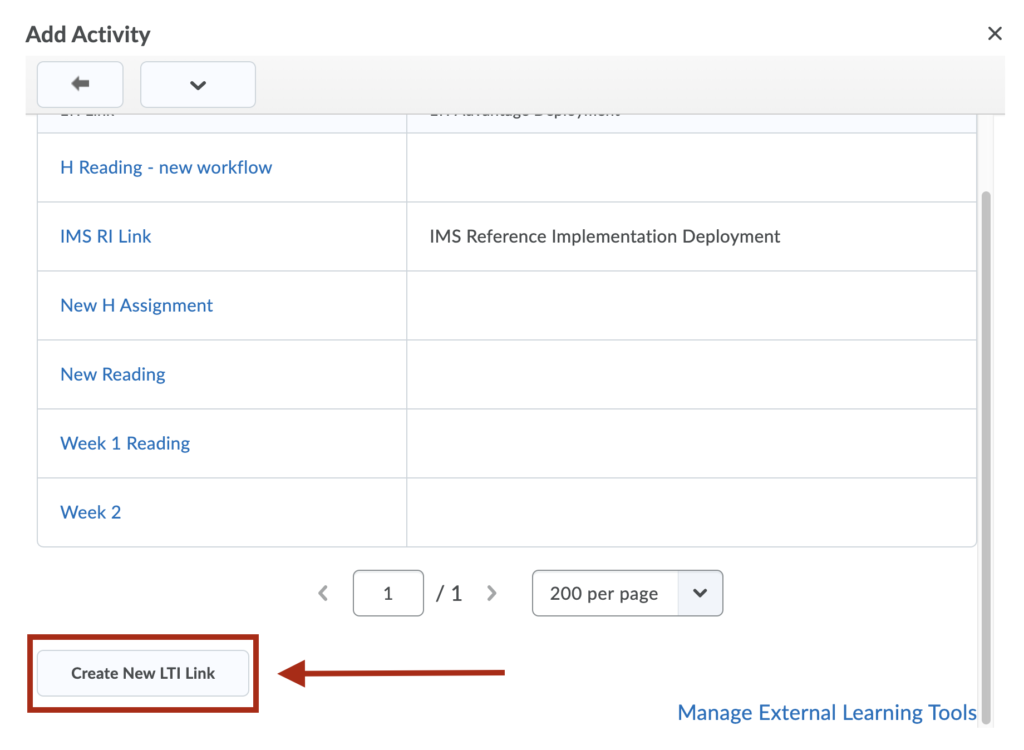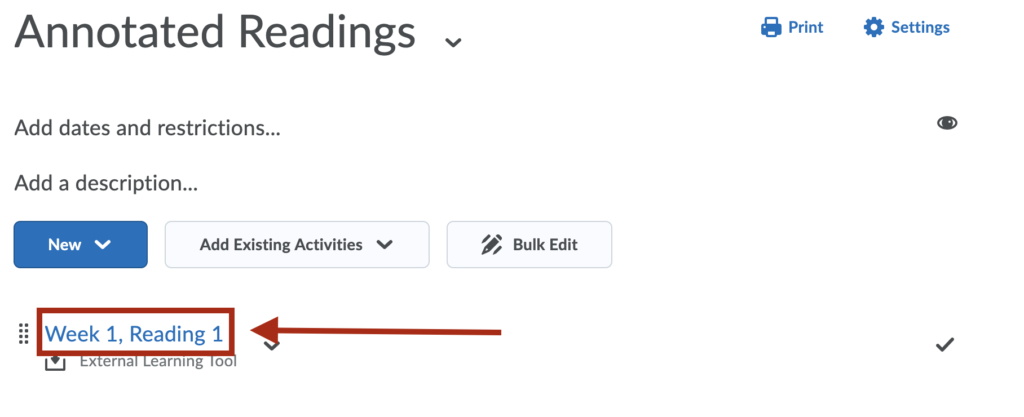This guide assumes a D2L administrator has already installed the Hypothesis LMS app at the organization level and granted access to the tool provider for your organization.
For installation instructions, please see our help article: Installing the Hypothesis LMS app for D2L.
1. Add the Activity
In the Content area of your course click on the Add Existing Activities drop-down and then select the Hypothesis tool from the menu.
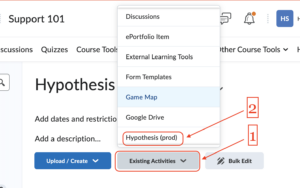
2. Follow the steps below when choosing your document source
Note the next steps and then visit Selecting a Document below.
3. Indicate if this will be a Group assignment
This option is only available if a D2L administrator has created a D2L OAuth 2.0 app integration with Hypothesis.
Note that the Hypothesis app refers to Group Set in the following configuration screen; this is equivalent and identical to D2L’s Group Category.
By default your Hypothesis reading will make all annotations visible to all students in the course.
You have the option to allow the creation of reading groups based on a pre-existing group set. To enable this, check the box to indicate This is a group assignment, then select the appropriate existing group set from the drop-down list.
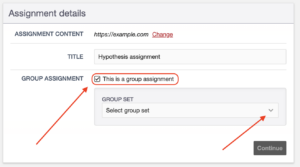
If you do not want to designate the reading as a groups assignment, leave the Group assignment box unchecked.
Click the Continue button.
4. When finished selecting a document, add a title before clicking “Continue”
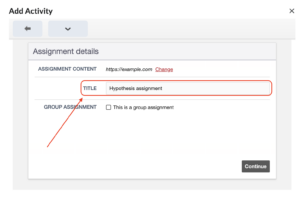
1. Add Existing Activities
In the Content area of your course, navigate to the Module or course area where you’d like to add your Hypothesis-enabled reading. Click on the Add Existing Activities drop-down and select External Learning Tools from the menu:
2. Create New LTI Link
On the Add Activity dialog, click the Create New LTI Link button (you may have to scroll down):
3. Add a title and the Hypothesis LTI URL
- Title:
- Enter a sensible title for the Hypothesis-enabled reading.
- LTI URL:
Important! You should only use the Canadian LTI URL if your D2L environment has been configured for Hypothesis’ Canadian servers. If not, you must use the Worldwide URL, even if your school is located in Canada. Contact us at support@hypothes.is if there is any confusion.- Worldwide
https://lms.hypothes.is/lti_launches
- 🇨🇦 Canada only
https://lms.ca.hypothes.is/lti_launches
- Worldwide

Click the Create and Insert button when you’re done.
4. Configure assignment as an “External Resource”
Click the down-arrow to the right of the name of new LTI Link, and select Edit Properties In-place.

Check the box to Open as External Resource.

5. Select the document to be annotated
Click on the title of the LTI Link you’ve just created:
6. Follow the steps below when choosing your document source
Note the next step and then visit Selecting a Document below.
7. Indicate if this will be a Group assignment
This option is only available if a D2L administrator has created a D2L OAuth 2.0 app integration with Hypothesis.
Note that the Hypothesis app refers to Group Set in the following configuration screen; this is equivalent and identical to D2L’s Group Category.
By default your Hypothesis reading will make all annotations visible to all students in the course.
You have the option to allow the creation of reading groups based on a pre-existing group set. To enable this, check the box to indicate This is a group assignment, then select the appropriate existing group set from the drop-down list.

If you do not want to designate the reading as a groups assignment, leave the Group assignment box unchecked.
Click the Continue button.
Selecting content for your Hypothesis-enabled readings
You will have the option to enter a publicly-viewable URL, select a PDF from D2L (if enabled), select a PDF from Google Drive, or select a PDF from OneDrive.
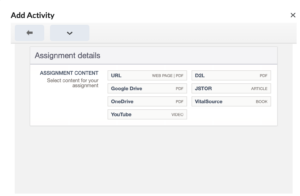
Expand the sections below for instructions to use each option:
Notes:
PDFs must have optically recognizable text in order to be annotatable in the Hypothesis app. If you can select text in the PDF, no further action is needed. If you can’t select text in the PDF, you’ll need to follow our instructions for how to OCR-optimize a PDF.
After selecting the URL or PDF for your assignment, you may need to refresh the page, or close and re-open the assignment, before you can start annotating.
Click the button that says Enter URL of web page or PDF. On the Enter URL dialog, enter a link to a public web page or PDF. Please note that the content at the link must be publicly viewable (i.e., not behind a login or paywall).

Click the Submit button.
Note: This option is only available if a D2L administrator has created a D2L OAuth 2.0 app integration with Hypothesis.
PDF files must have already been uploaded to D2L before using this option. Please see our guide on Using Hypothesis With D2L Course Content Files for more info and instructions.
Click the button that says Select PDF from D2L. You will then be able to browse your D2L course content files to select the PDF you wish to use in the Hypothesis reading.
Highlight the file you wish to use and click the Select button.

Using a PDF stored in Google Drive within the Hypothesis LMS app will change the sharing settings of the selected file to allow the PDF to be shown to anyone viewing the assignment. The exact setting on the file will be “Anyone with a link can view”. For more information please see our articles on Google Drive sharing settings and using Hypothesis with Google Drive.
Click the button that says Select PDF from Google Drive. You will be asked to select a Google account and/or authorize the Hypothesis LMS App to access Google Drive. To use an institutional Google Drive account you need to already have the ability to share documents with users outside your organization.
Search or browse to select a PDF to use in your reading. You may also click the Upload tab to upload a new PDF to use.
Only files for which you have edit permission are able to be used by Hypothesis.
Click on the file you want to use and then click the Select button.
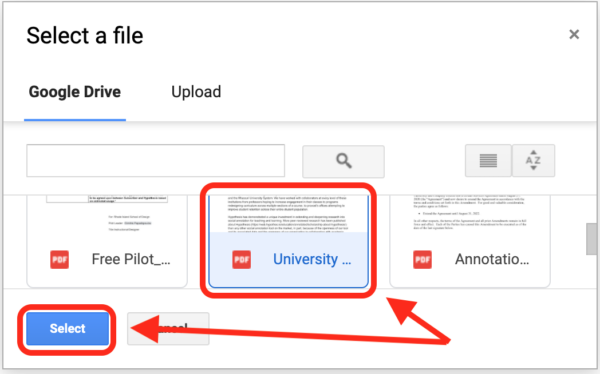
Note: This process will change the sharing permission of the selected Google Drive file to allow the PDF to be shown to anyone viewing the assignment. For more information please see our document about using Hypothesis with Google Drive.
Click the button that says Select PDF from OneDrive. You will be asked to select a Microsoft account and/or authorize the Hypothesis LMS App to access OneDrive. To use an institutional OneDrive account you need to already have the ability to share documents with users outside your organization.
Once logged on, browse to select a PDF to use in your reading. You may also select the Upload option to upload a new PDF to use.
Only files available in “My files” are able to be used by Hypothesis. You will be unable to use PDFs that belong in any Shared Libraries.
Click to select the file you want to use and then click the Open button.
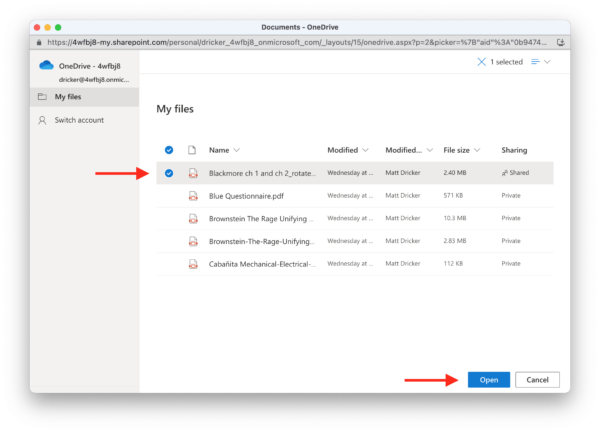
Note: This process will change the sharing permission of the selected OneDrive file to allow the PDF to be shown to anyone viewing the assignment. For more information please see our document about using Hypothesis with OneDrive.
When selecting a text from JSTOR it must be one that your school has license to access, and you must use the JSTOR stable URL. Complete instructions here.
Find and copy the Stable URL of the article you will be assigning from JSTOR.org. The stable URL is listed as part of the content metadata section of the page, usually under the title, author, and journal information.
Select the JSTOR article option in the Hypothesis picker during the assignment creation process and paste the stable URL into the text field. Click the right arrow and then accept JSTOR’s terms of use.

When selecting a text from VitalSource it must be one that your and your students have access to independent of Hypothesis. Complete instructions here.
Open your VitalSource bookshelf, and then find and copy either the text’s VBID or the text’s URL.

Select the VitalSource article option in the Hypothesis picker during the assignment creation process and paste the VBID or URL into the text field. Click the right arrow and then the “Select Book” button.

In the next screen select the starting point of the assignment (for example, you may have a specific assignment start on the book’s 2nd chapter instead of starting at the beginning of the book for every assignment).
With the starting point selected, click the Select button.
Choosing the YouTube option enables an instructor to create an assignment where users can watch the selected YouTube video and annotate its transcript simultaneously. Here’s what a YouTube assignment in Hypothesis looks like:
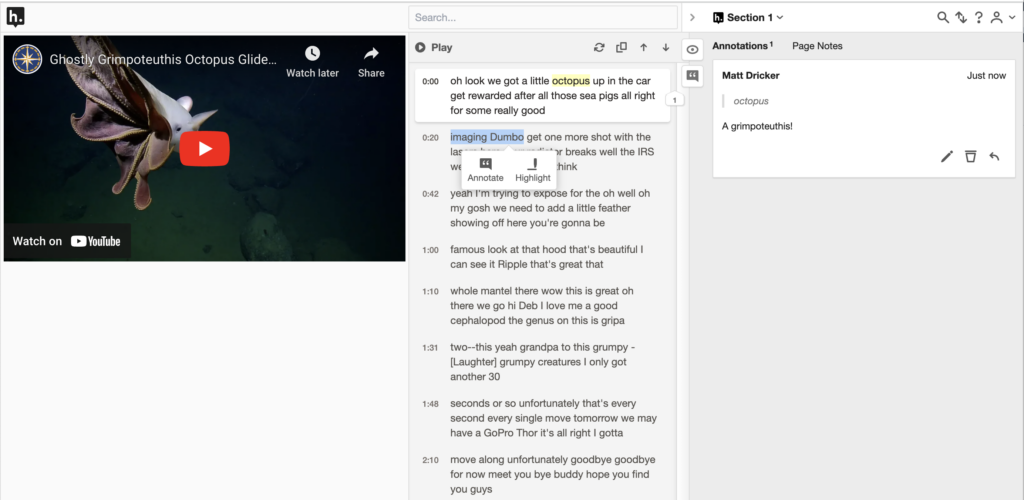
Click here to view the detailed steps on how to set up a Youtube video assignment in Hypothesis.
A special note about the Hypothesis Grading Bar
Depending on which version of the Hypothesis LTI tool is installed, the Hypothesis grading bar may not be visible in the reading by default. If you do not see the grading bar shown across the top of the assignment, you will need to follow our instructions for manually adding a grading item to the reading.

For more information on grading, along with instructions for enabling the grading bar, please see Grading Student Annotations in D2L.
Edit and reconfigure the Hypothesis reading assignment
At any time you can reconfigure the Hypothesis reading assignment to use a new document or group set:
- With the reading assignment open, click Edit next to the assignment name in the Grade Bar

- If the assignment will not open and shows an error message, you can click the Edit assignment link at the bottom of the window
